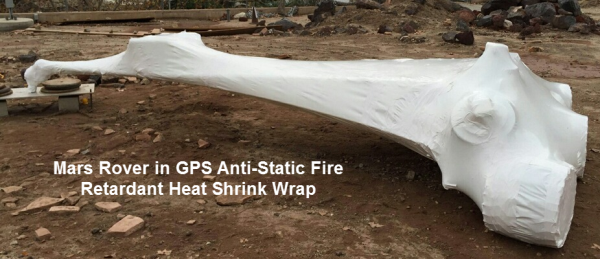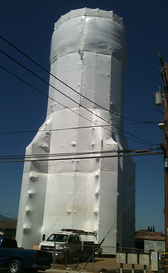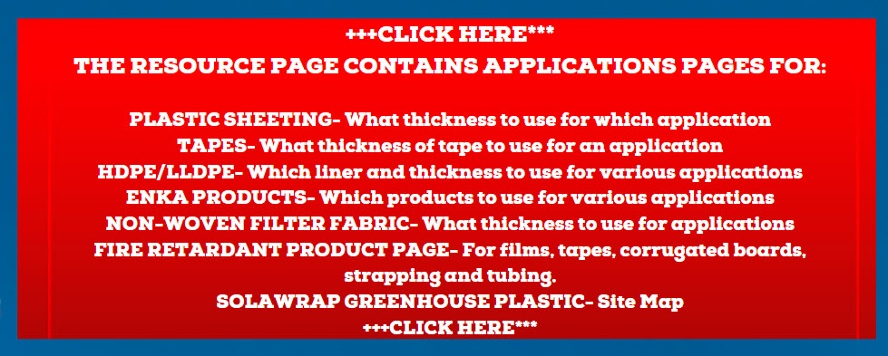At last we have a heat shrink wrap film that has ultra violet resistance, is fire retardant, and is also anti-static! The "all-in- one" implication for offering both anti-static and fire retardant characteristics to the film is pronounced. This film is fire certified to the NFPA 701. If you are wrapping equipment that has electrical motors, semi-conductors, or cannot withstand static discharge, the anti-static property will minimize the chances of a spark. Take the Mars Rover for example..it was wrapped with this proprietary film as pictured below!

Wrapped by the Shrink Wrap Pros!
Heat shrink wrap film is one of the most versitile, useful ways to protect and encapsulate odd shaped objects of all sizes- (like the rocket pictured below from one of GPS's customers). Heat shrink wrapping is used becasue it offers a containment that is strong, durable, and require little mainenance.
 Heat shrink wrap film (often referred to as, shrink wrap film/plastic) is made from virgin polyethylene resin, the most dependable film for the job. It shrinks when heat is applied, encapsulating the object in a secure manner. This encapsulation insures that the elements such as wind, rain, snow won't have access to the item.
Heat shrink wrap film (often referred to as, shrink wrap film/plastic) is made from virgin polyethylene resin, the most dependable film for the job. It shrinks when heat is applied, encapsulating the object in a secure manner. This encapsulation insures that the elements such as wind, rain, snow won't have access to the item.
Heat shrink wrap film comes in a variety of thicknesses and colors to better suit the application. The thicker films are more durable for more demanding applications. The thicknesses range from 6 mil, 7 mil, 8 mil, 9 mil, 10 mil, and 12 mil.
There are three standard colors. White is the most common. It is used for reflecting heat, and does well in all weather conditions. White is often used for transportation as a cover. Blue is well suited for areas with snow since it absorbs heat which helps the snow to slide off. Clear works well when you want to see what is covered since you can see through it.
Heat shrink wrap can also come in a flame/fire retardant version which will quickly extinquish the wrap should it come in contact with flames. Meeting NFPA 701, the FR heat shrink wrap is popular with shipyards, scaffolding, factories, or any application that requires the materials to be fire retardant.
.There are hundreds of uses for heat shrink wrap film. Ten of the most pouluar uses are:
- Use in construction on scaffolding to wrap buildings
- Scaffolding wrap containment for bridges/ construction
- Marine uses such as wrapping boats, and marine equipment
- Disaster relief projects for covering damaged buildings and roofs
- Wrap and protect large equipment of all shapes and sizes
- Shrink wrap pallets for freight
- Shrink wrap items that will be transported or packaging
- Winterize items for storage
- Environmental containment for safe removal of lead and other hazards
- RV wrap
If you would like to know more about this product click here.










